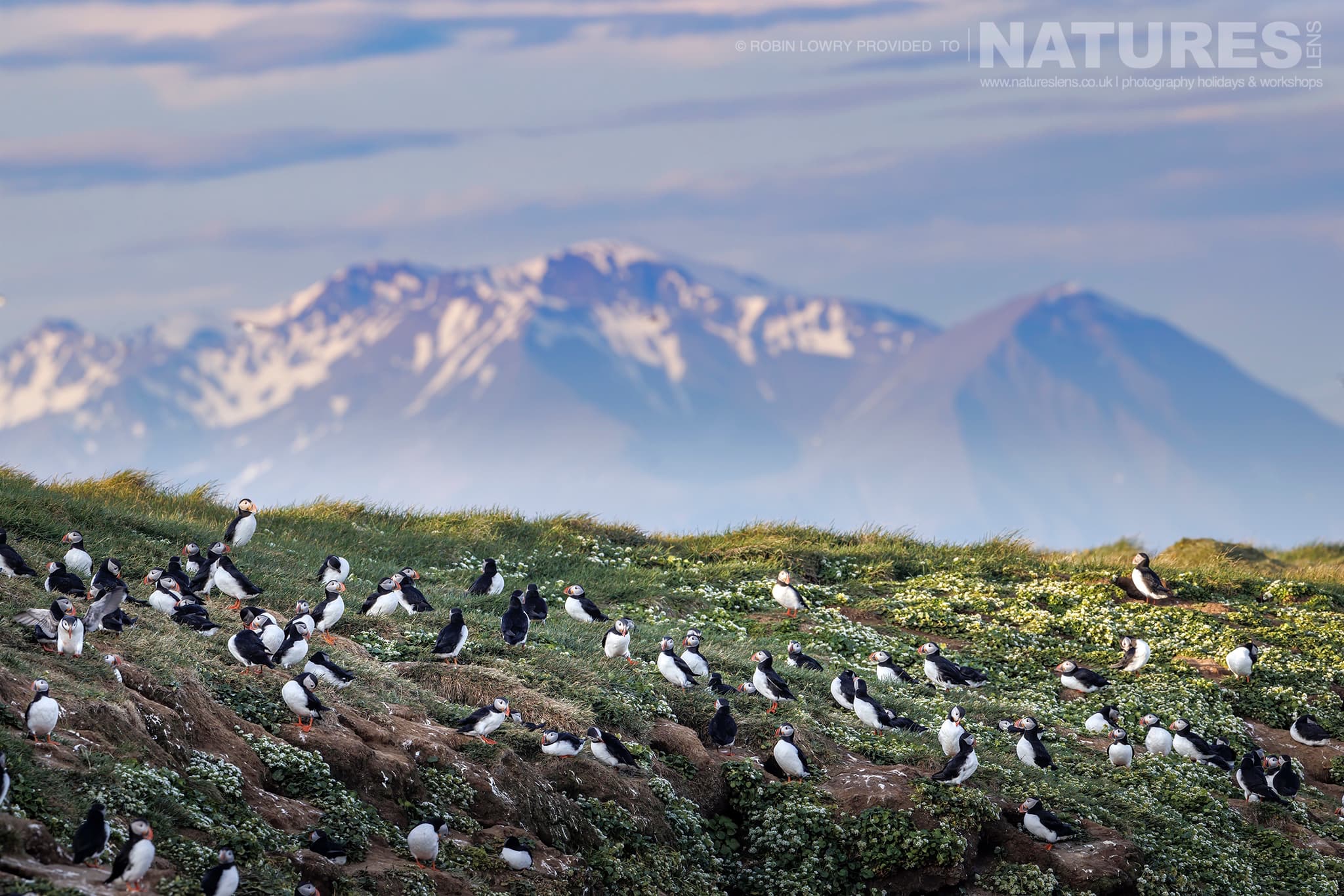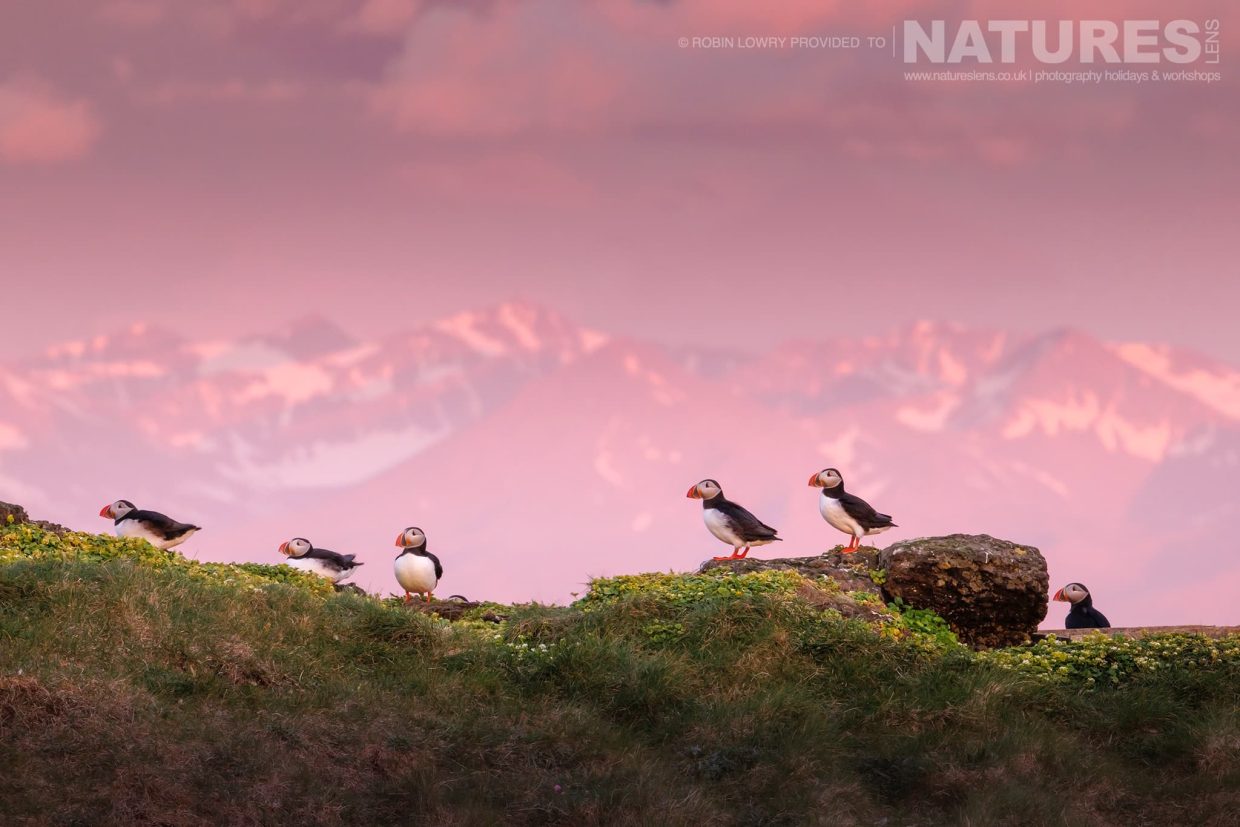Iceland is an iconic destination renowned for its stunning landscapes & unique cultural heritage. From the ice-cold iceberg lagoons in the south to the rolling hills & volcanic valleys in the centre, these magnificent landscapes are rarely rivalled anywhere else in the world. Yet, there is another side of Iceland that is far less known & rarely explored; the wildlife. Nestled in the remote islands of the north lies a unique & remarkable Icelandic Atlantic Puffin colony that attracts bird photographers from around the globe.
On the tiny island of Grímsey, located just 70km off the north coast of Iceland, these majestic birds create a remarkable spectacle that has to be seen to be believed; Grímsey Island is one of the best locations to see puffins in Iceland. Just a short flight from mainland Iceland, Grímsey offers much to explore for both experienced bird photographers & novices alike.
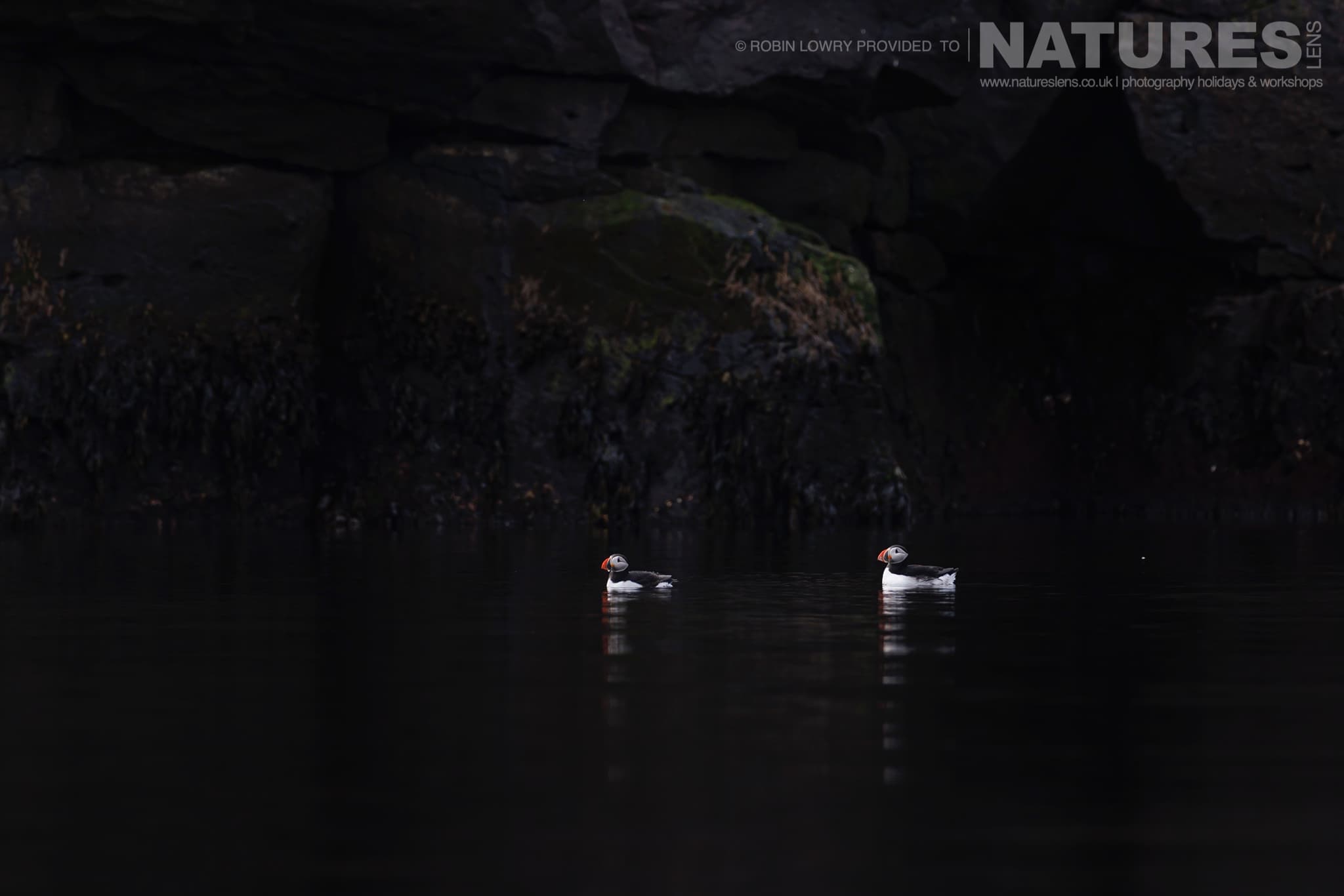
The island's unique landscape is the perfect habitat for its famous Atlantic Puffin colony & many other birds, such as kittiwakes, razorbills & guillemots. The ever-changing weather also adds to the atmosphere of the island, with strong winds, strong tides & grey clouds looming overhead.
During the summer months, Grímsey is also known to experience the midnight sun, making it the perfect place to witness the beauty of the natural world in its full glory. Join us on a journey to explore this unique Icelandic Atlantic Puffin Colony on Grímsey Island & discover the wonders of this remarkable place! From the incredible sights & sounds of the puffins nesting to the unique inhabitants & their fascinating stories, nothing compares to experiencing the magic of this particular corner of the world.
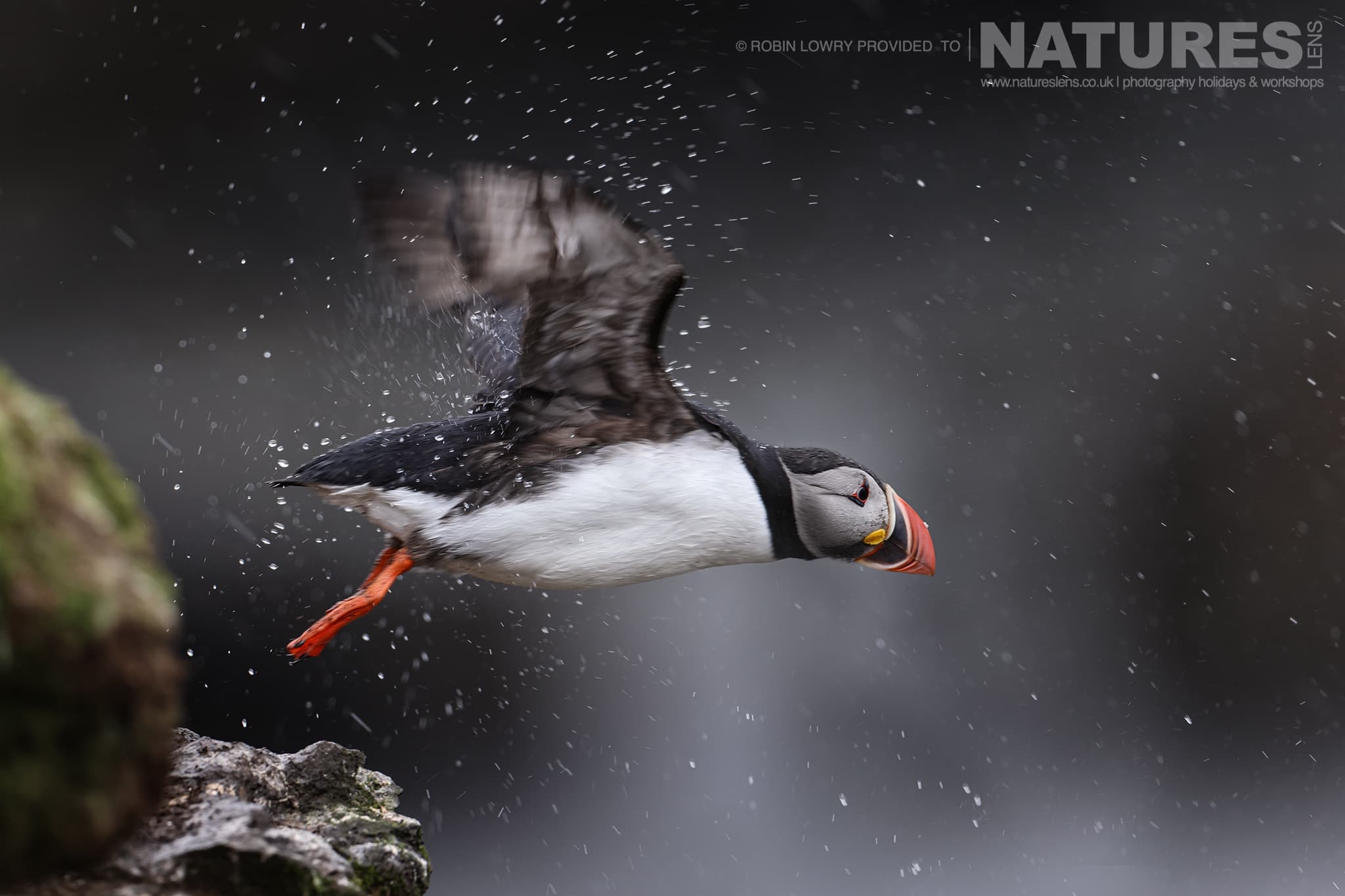
About the Island of Grímsey
Grímsey has been inhabited since the Viking settlement of Iceland. Ancient records indicate that King Olafur offered the island to Icelanders in exchange for his friendship, but the people refused because it was a valuable food source, such as birds, eggs & fish.
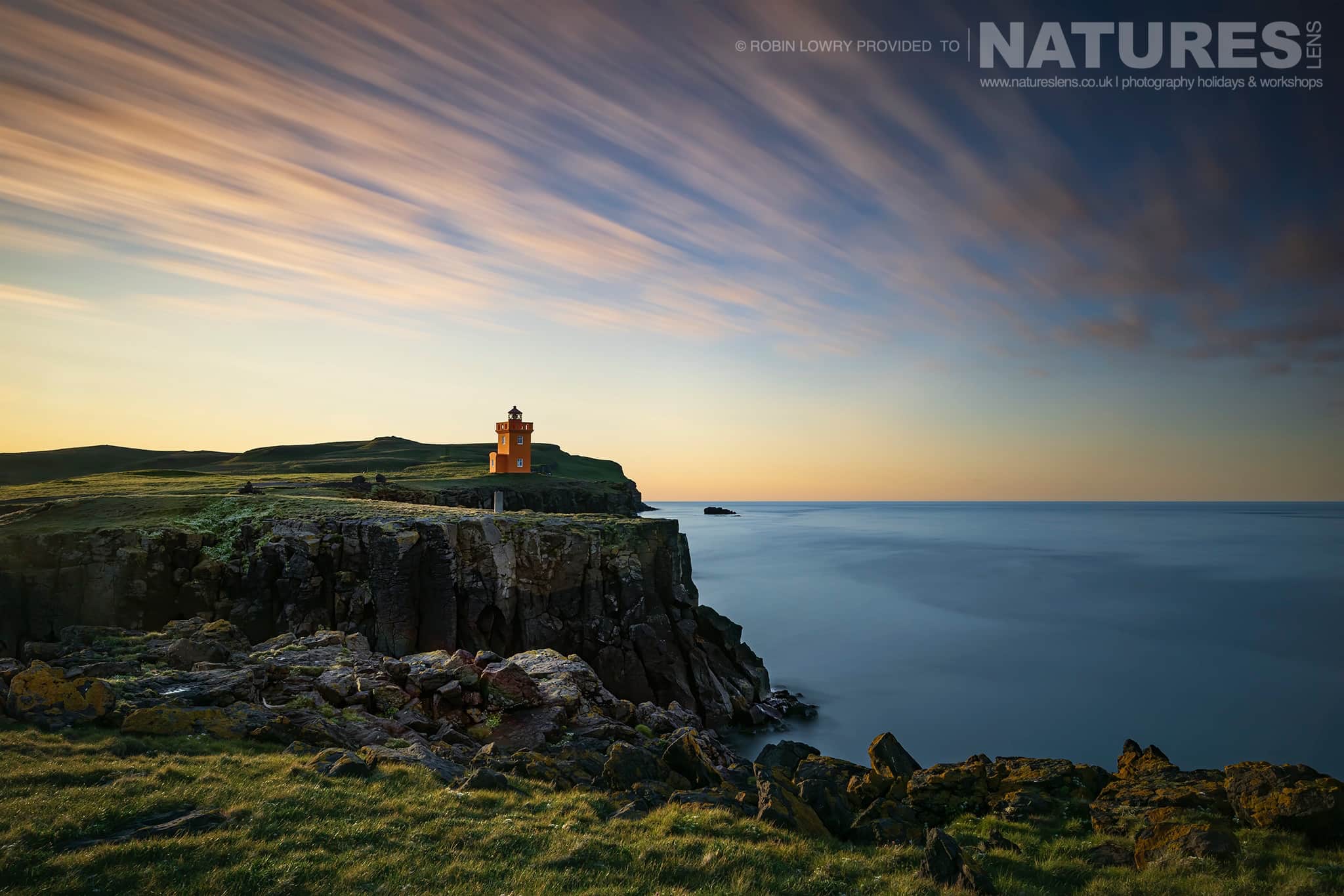
After the introduction of Christianity, Grímsey was owned by monasteries on the mainland & its tenants were obligated to pay the annual rent in dried cod. Today, ownership of the island is divided between the residents, the town of Akureyri, & the Icelandic state.

The population of Grímsey numbers about 80 residents & the land is a prosperous & fertile community with many children. The island's coastal rocks are particularly interesting due to scurvy grass, a vitamin-rich plant with purported medicinal properties. High cliffs provide homes for hundreds of thousands of Atlantic Puffins & Arctic Terns, the only predators being other birds. Fishing, fish processing, & tourism all form integral roles in life on the island, & the unique vegetation, sculpted by the arctic climate, is a defining feature. Furthermore, due to the island's location near the Arctic Circle, summertime offers an impressive 24-hour day of daylight, allowing for photography & other activities.

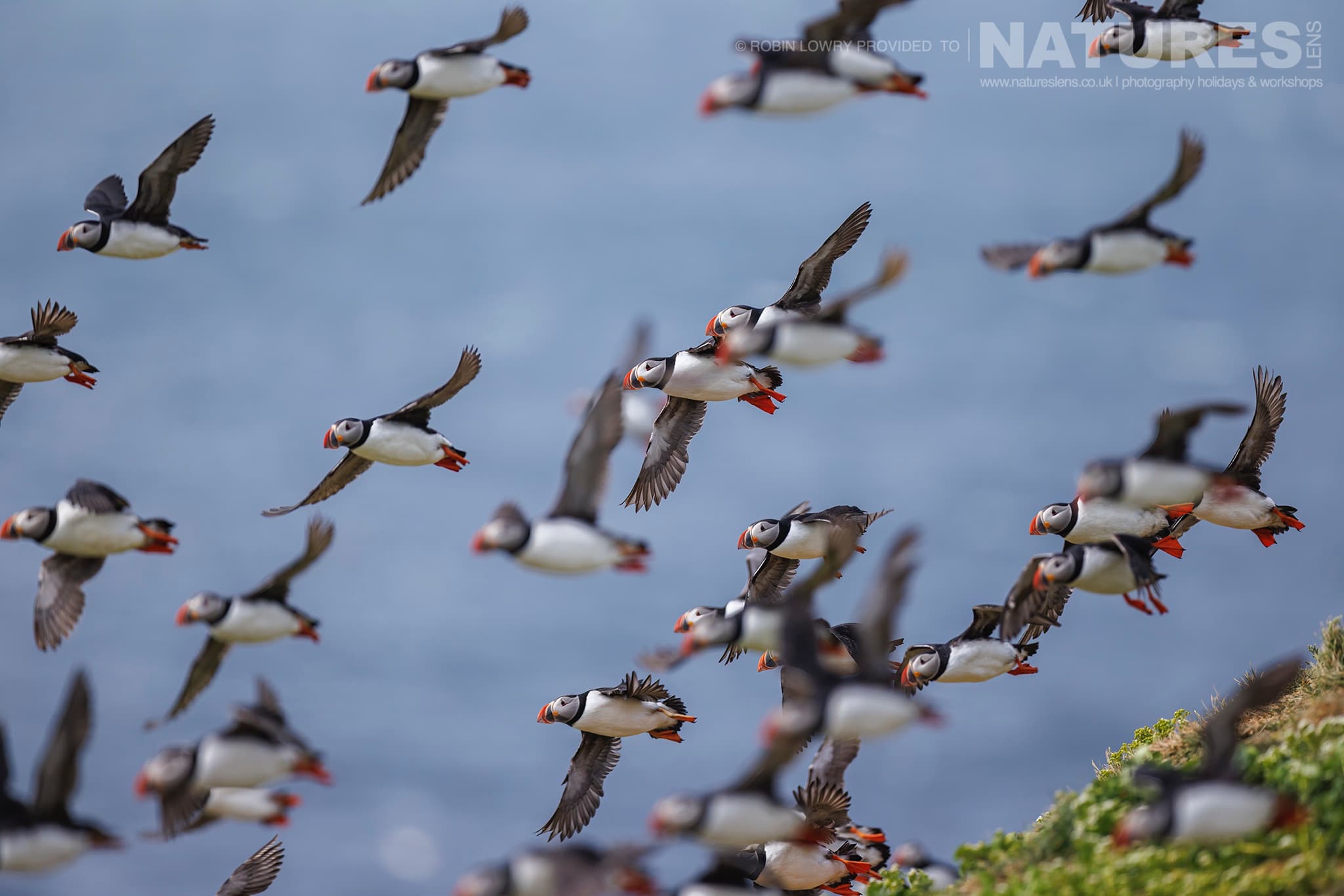
How Many Species of Puffin are there?
Four Puffins varieties exist, including the Atlantic, Horned, Tufted & Rhinoceros Auklet varieties. The Atlantic Puffin is the smallest of the species & is found exclusively in the North Atlantic Ocean. All other species of Puffins inhabit the Pacific Ocean.
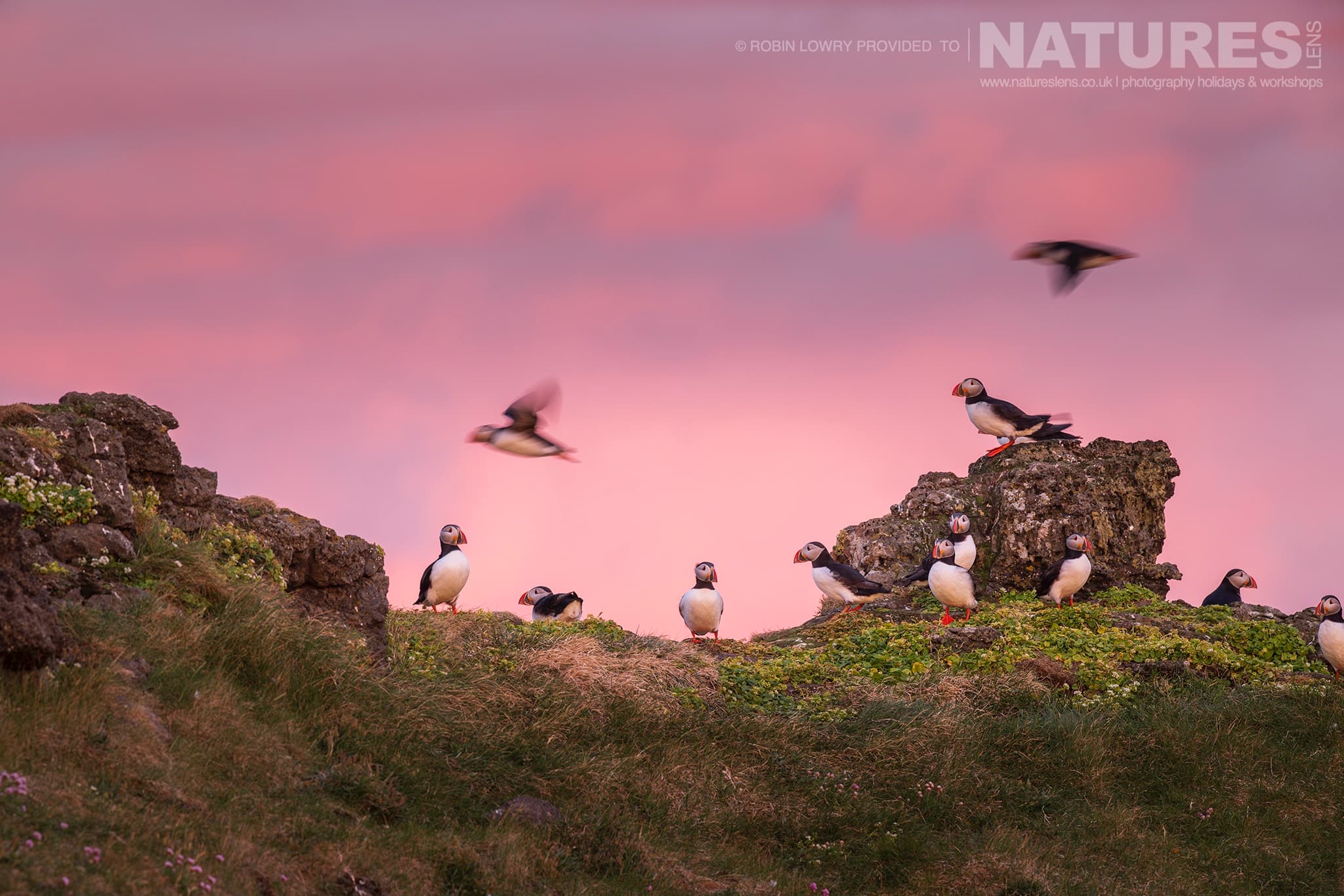
These birds live on the open sea & usually return to land only to breed; they have a lifespan of around 20 years or more.
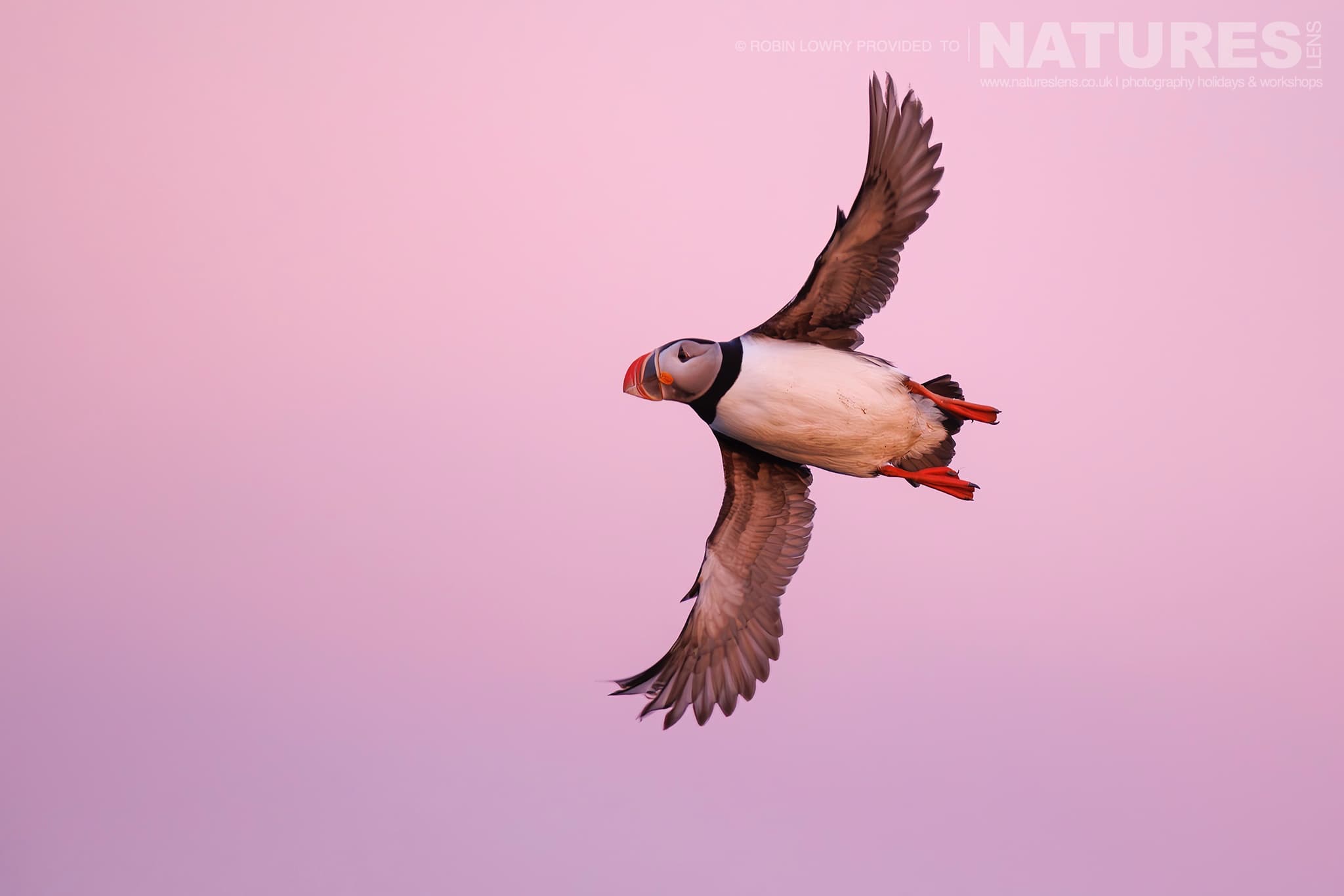
About the Atlantic Puffin
The Atlantic Puffin is a small bird of the Auk family found in the Northern Hemisphere. Puffins are characterized by their colourful, stocky bodies & bright red, triangular beaks.

During the breeding season, puffins move to the coastal areas of Norway, Iceland, Greenland & Scotland. In winter, they migrate to open seas, as far away as the coasts of North America.
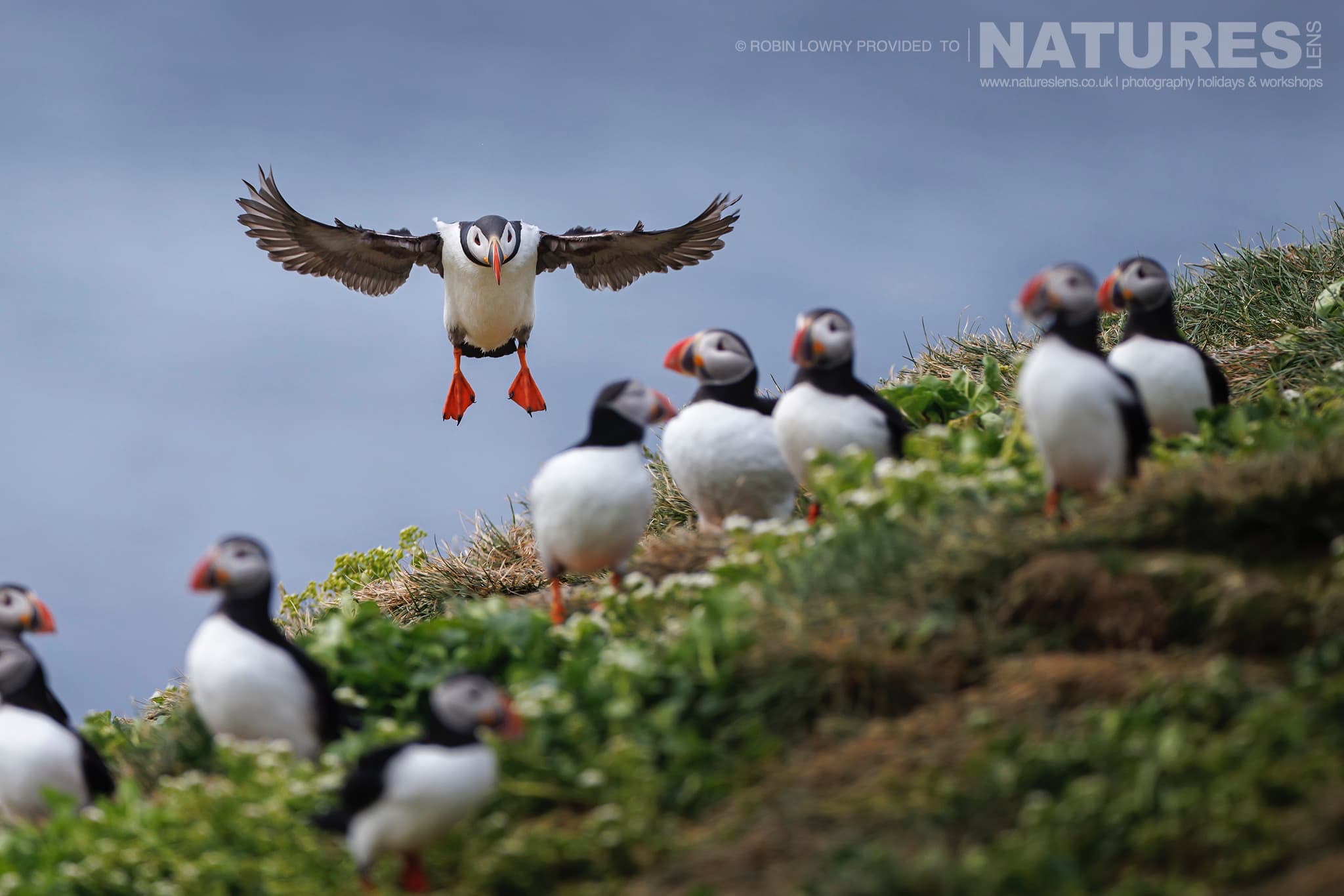
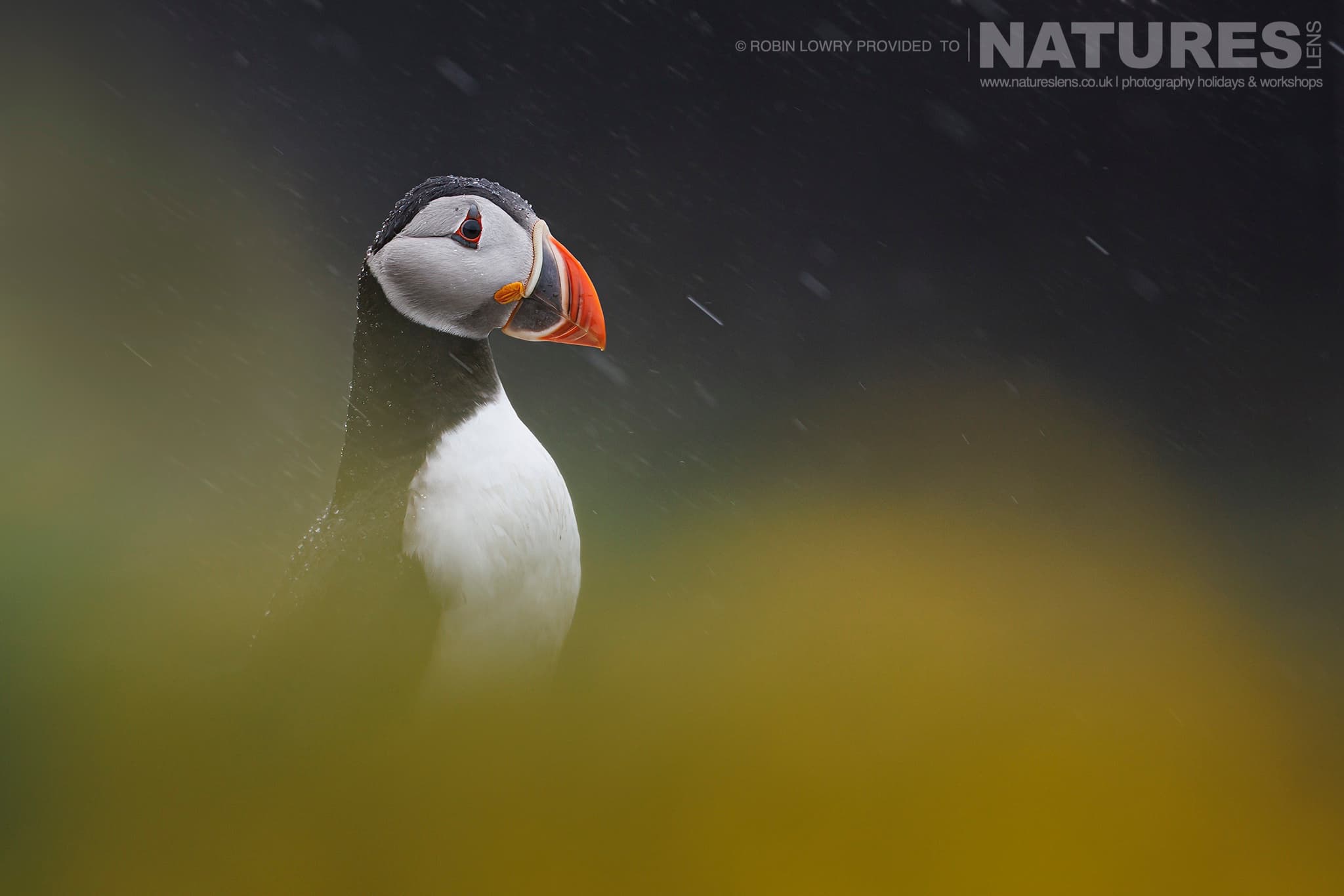
They are great swimmers, & can dive over 60 feet deep to catch fish like herring, sand eel, & capelin. Atlantic puffins have remarkable courtship behaviour, & spend time together in pairs to form lifelong, solid bonds. They are beautiful & extremely captivating birds, & are sure to bring a smile to your face as you watch them on the coast.
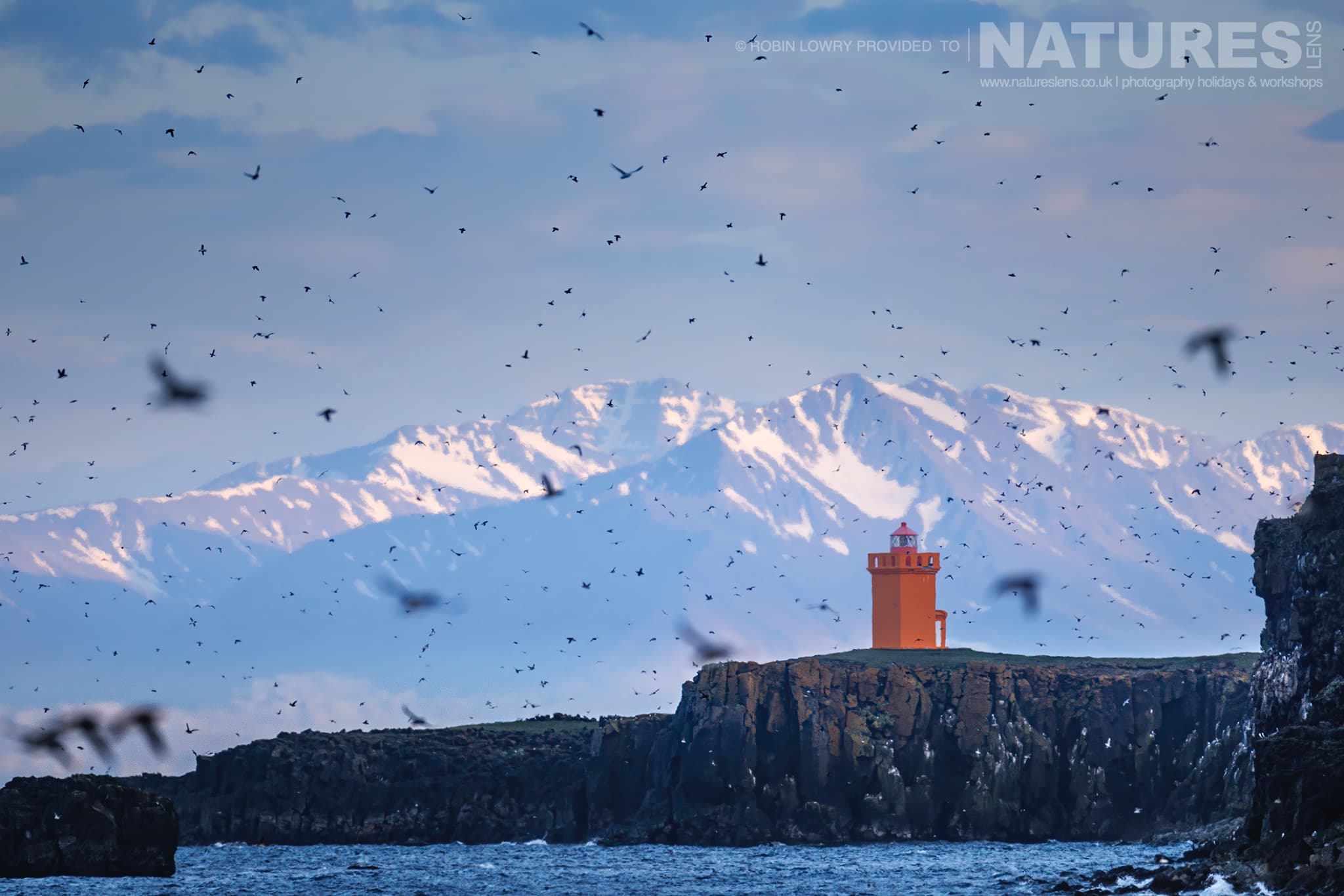
Grímsey Island's Atlantic Puffin Colonies
Individuals of the Great Skua species also endanger the highly vulnerable newly-fledged puffin chicks. These large birds will steal the fish from adult puffins in mid-flight & can even physically attack the adults when they land.
On Grímsey, the diet of Atlantic Puffins consists primarily of “Sand Eels”, though they may also feed on shrimp & cod when available. Puffins have adapted to the sea & are proficient swimmers, taking advantage of their semi-extended wings like paddles to “fly” through the water while their webbed feet provide the rudder to keep them on course.

Despite the dangers brought by avian predators, the puffins of Grímsey can thrive due to the lack of terrestrial predators. In an open sky, however, they remain at risk of being attacked by Great Black-backed Gulls or having their food supply stolen by Great Skuas. The Atlantic Puffins must be protected from these aerial threats to maintain a stable population on the island.

Other bird species found on Grímsey Island
Being situated on the edge of the Arctic Circle means that Grímsey Island is home to various bird species other than the Atlantic Puffin. These include the Northern Fulmar, the Great Skua, the Razorbill, the Red-throated diver, the Turnstone, & the Arctic Tern. Many species of waterfowl spend time on the island, including the Barnacle Goose & the White-fronted Goose.
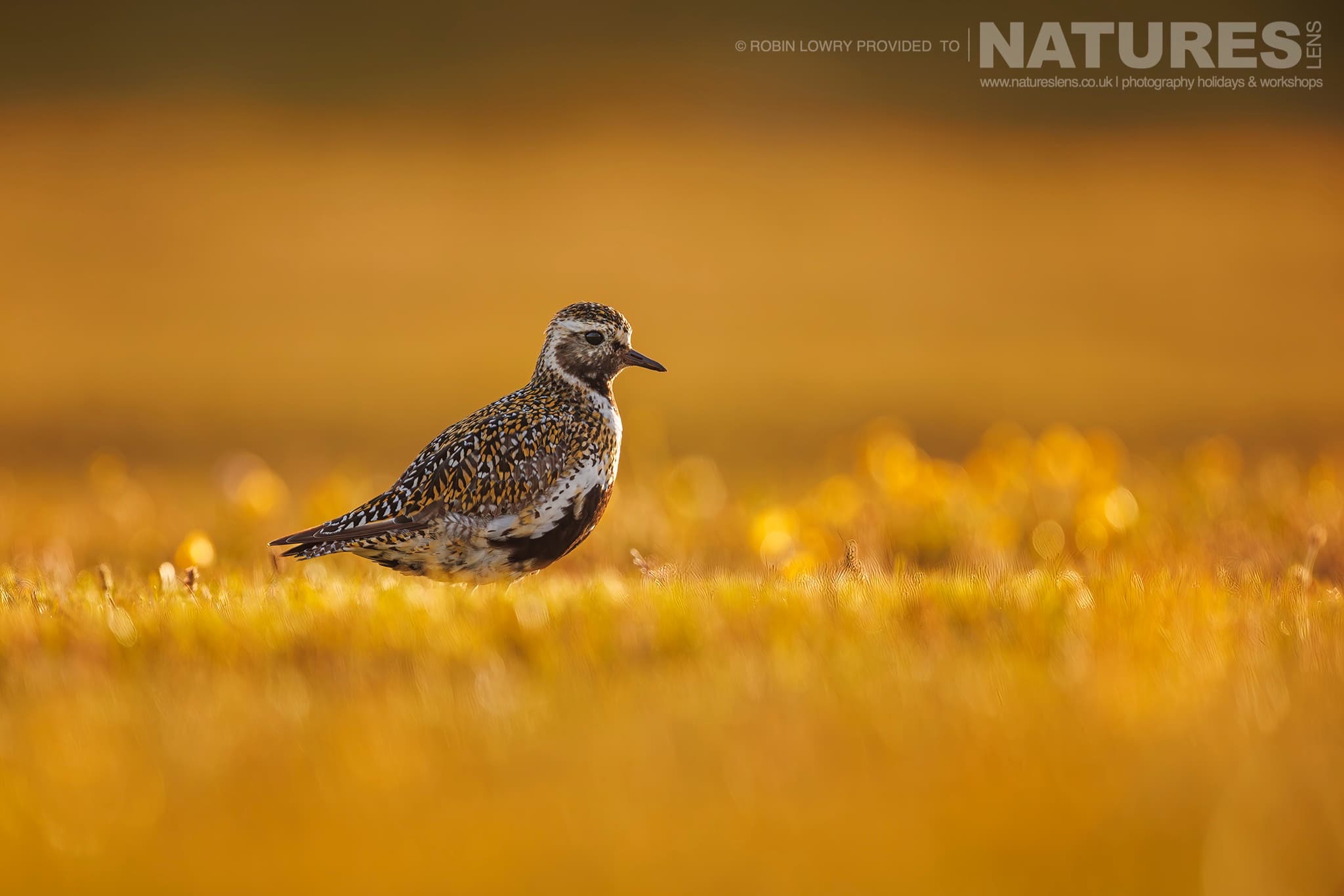
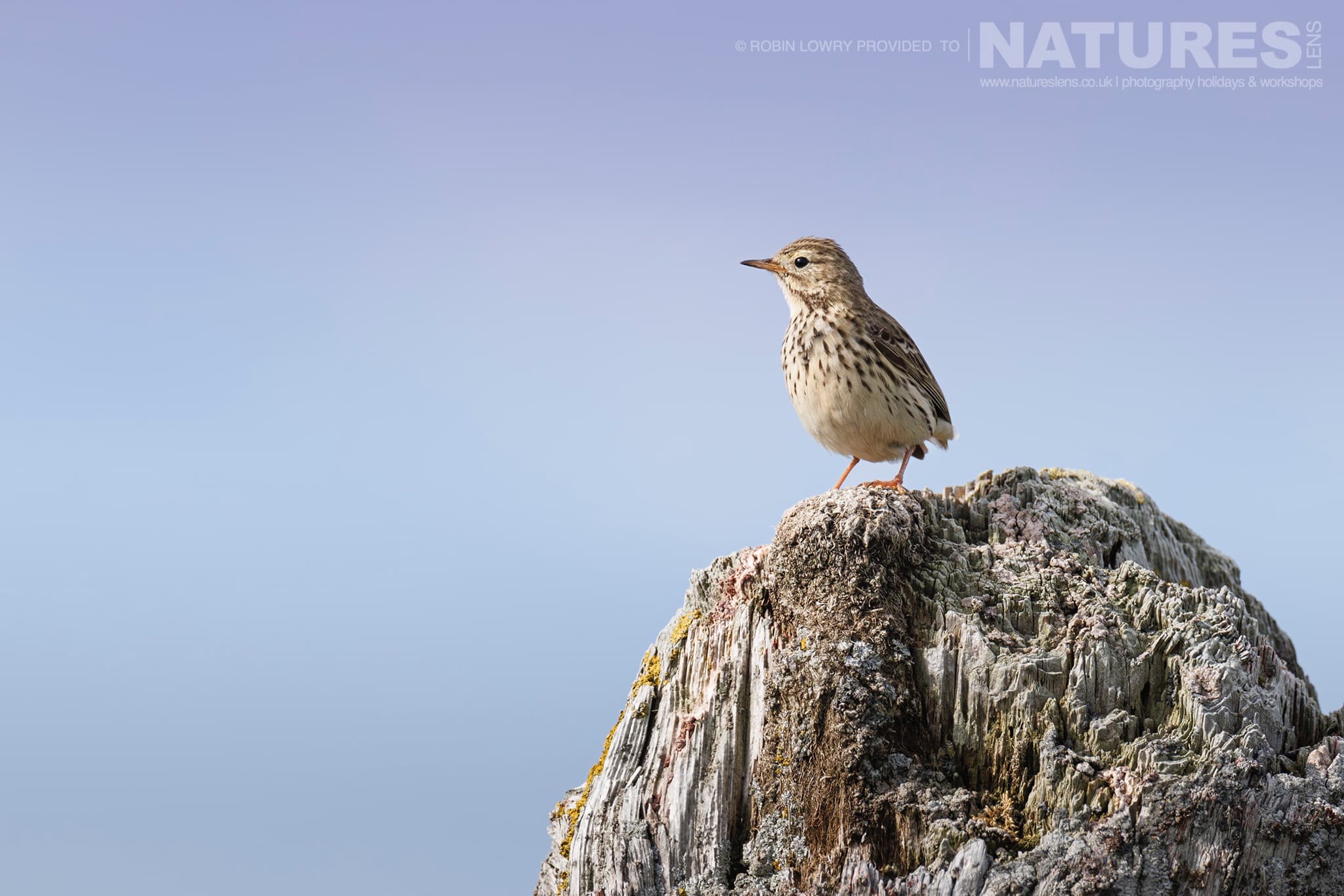
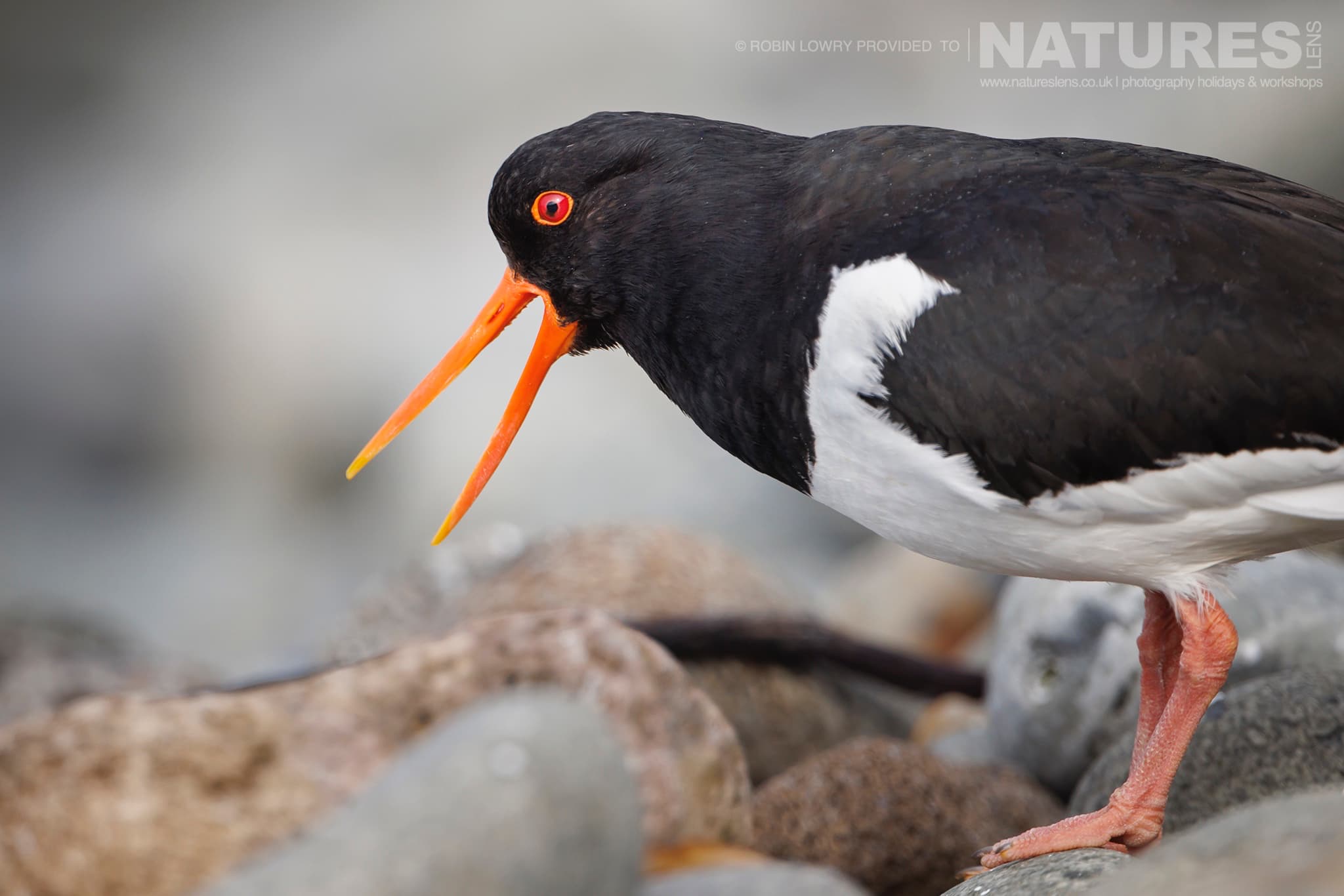
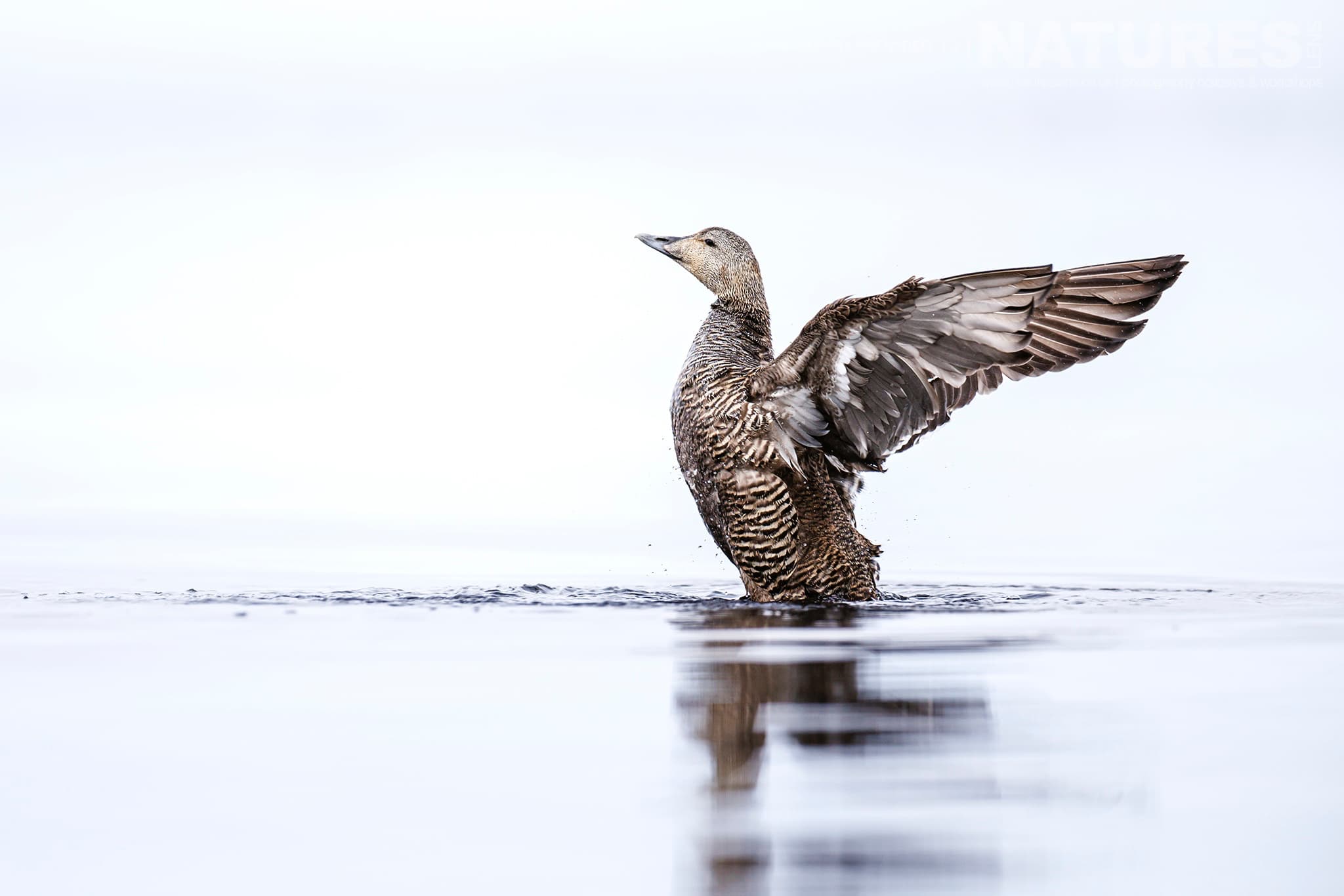

Which Tours Does NaturesLens Schedule for Photography of Grímsey's Atlantic Puffin Colony?
NaturesLens offers a range of Puffin photography holidays to Grímsey Island designed to allow photographers of all levels to add images of the birds in this magnificent Icelandic Atlantic Puffin colony to their portfolio. These trips generally are conducted in June or July when the Icelandic Island's wildlife is most active.
Our photography holidays allow photographers to capture stunning images of Atlantic Puffins & many other Icelandic species.

At NaturesLens, we aim to provide photographers with an unforgettable experience that will leave them with beautiful, memorable images. Our trips are led by experienced wildlife photographers who are passionate about wildlife photography & are dedicated to helping photographers capture the best images possible.
